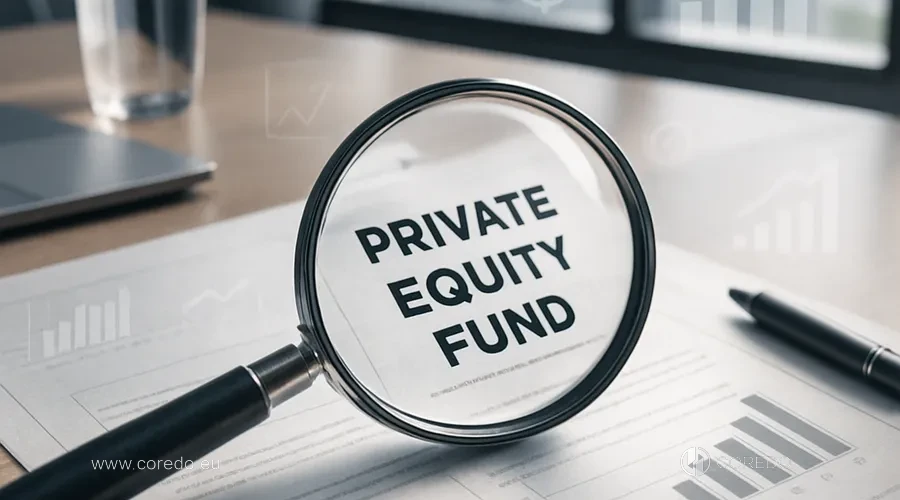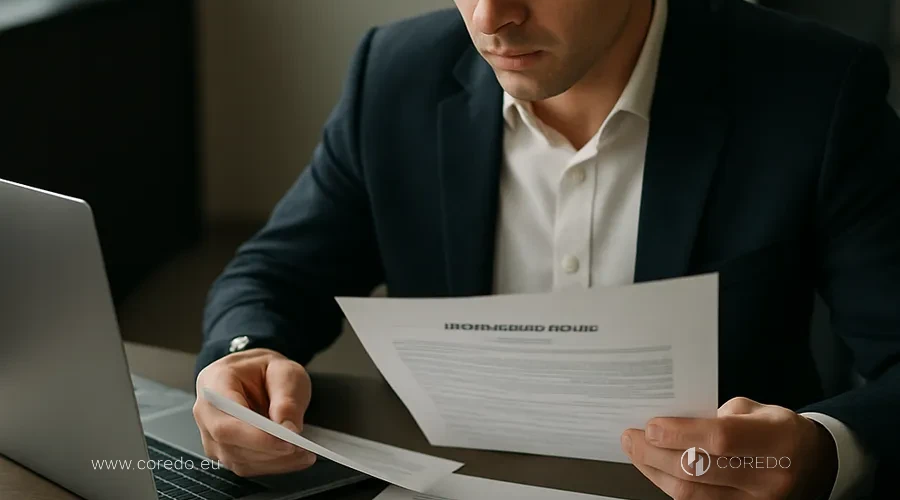In this article I will reveal the complete roadmap for registering an investment fund in Europe – from choosing the optimal jurisdiction to opening a bank account and launching operational activities. You will learn which documents to prepare, which AML/KYC requirements to comply with, how to structure fund governance and how to avoid mistakes that cost entrepreneurs time and money. The article is structured as a practical guide and at the same time as an analytical overview that will help you make strategic decisions at every stage.
Private Equity fund in the EU: what is it and why register it?

Definition of a Private Equity fund and its role in the European economy

But a Private Equity fund is not just a company that manages investors’ money. It is a regulated financial structure that is subject to strict European legal requirements. Each fund must have a license for asset management, comply with requirements for disclosing information about beneficiaries, ensure the protection of investors’ rights and adhere to AML/KYC standards. Ignoring these requirements risks fines, license refusal and even criminal liability.
Registration and licensing — why are they needed?
Investor protection. Regulators require funds to disclose information about their investment strategy, risks, fees and governance structure. This enables investors to make informed decisions and protects their rights.
Prevention of money laundering and terrorist financing. AML/KYC requirements ensure that funds do not become tools for illegal operations. Regulators require verification of sources of funds, identification of beneficial owners and monitoring of suspicious transactions.
Financial system stability. Licensing and supervision prevent the creation of unregulated funds that could pose systemic risk.
Access to investors. Without a license you will not be able to attract capital from professional investors, pension funds and other institutional investors who require regulated structures.
Key requirements of AIFMD and EU directives
According to the AIFMD, each fund must:
- Have a licensed management company (AIFM) that is responsible for investment decisions and risk management.
- Appoint an independent depositary that holds the fund’s assets and monitors compliance with requirements.
- Disclose information about the fund’s beneficial owners in accordance with the 2025 requirements, which have been tightened.
- Comply with AML/KYC requirements, including verification of sources of funds and investor identification.
- Provide annual reports to the regulator and investors.
- Manage liquidity risks and ensure that the fund can meet its obligations to investors.
In addition to the AIFMD, funds must comply with the requirements of the European Securities and Markets Authority (ESMA), national regulators (for example, CySEC in Cyprus, MFSA in Malta, the Bank of Lithuania) and the requirements for digital identification of founders (eIDAS), which came into force in 2025.
Choosing a jurisdiction for a Private Equity fund in the EU

choice of jurisdiction for registering a Private Equity fund in the EU is a strategically important decision that affects tax burden, investor protection and access to the European market. Different countries offer unique conditions for fund formation, so it is important to compare key European jurisdictions, taking into account regulatory, tax and infrastructure requirements.
Comparison of European jurisdictions
Choosing a jurisdiction is a strategic decision that affects licensing timelines, cost, tax burden and management flexibility. COREDO’s practice has shown that there is no universal jurisdiction for all funds — the choice depends on fund size, investment strategy and target investors.
| Criterion | Lithuania | Cyprus | Malta | Luxembourg |
|---|---|---|---|---|
| Minimum capital | 125,000 EUR | Depends on type | Depends on type | 1,250,000 EUR |
| Licensing timeline | 3–6 months | 2–3 months (RAIF) | 4–8 weeks | 6–12 months |
| Residency requirements | None | None | None | Local director required |
| AIFMD passport | Yes | Yes | Yes | Yes |
| tax incentives | Moderate | High | High | High |
| Regulator | Bank of Lithuania | CySEC | MFSA | CNPD |
Lithuania, an optimal choice for mid-sized funds (50–500 mln EUR). The Bank of Lithuania is known for its professionalism and transparency of process. Licensing timelines: 3–6 months, which is faster than Luxembourg but slower than Cyprus. Minimum capital: 125,000 EUR. Lithuania offers a good balance between speed, cost and reputation.
Cyprus: a leader in licensing speed, especially for RAIF (Regulated Alternative Investment Fund), which are registered in 2–3 months. CySEC (Cyprus Securities and Exchange Commission) has experience working with international funds. Cyprus also offers tax incentives and management flexibility. At the same time, Cyprus’s reputation has improved in recent years, but it remains less attractive to conservative investors compared to Luxembourg.
Malta, the fastest jurisdiction for licensing (4–8 weeks). The MFSA (Malta Financial Services Authority) is known for its efficiency. Malta offers tax incentives and flexibility. It is a good choice for funds that want to enter the market quickly.
Luxembourg, a premium jurisdiction for large funds (over 500 mln EUR). Luxembourg has the highest reputation globally, attracts conservative investors and offers tax benefits. On the other hand, licensing timelines are 6–12 months and minimum capital is 1,250,000 EUR. Luxembourg suits funds that are ready to invest in reputation and long-term development.
Selection criteria: taxes, speed, flexibility
When choosing a jurisdiction, several criteria should be considered:
Tax residency of the investment fund. Different jurisdictions offer different tax regimes. For example, funds in Cyprus and Malta can obtain incentives on investment income. Luxembourg offers a participation exemption system that helps avoid double taxation. Lithuania offers a standard tax regime with possible optimization. The choice of jurisdiction should be coordinated with the fund’s tax planning.
Licensing speed. If you want to enter the market quickly, choose Malta (4–8 weeks) or Cyprus (2–3 months). If you have time and are willing to wait, Luxembourg offers the best reputation but requires more time.
Management flexibility. Cyprus and Malta offer greater flexibility in fund structuring and asset management. Luxembourg is more conservative and requires adherence to strict rules.
Capital requirements. Luxembourg requires a minimum of 1,250,000 EUR, which may be a barrier for startups. Lithuania, Cyprus and Malta require less capital.
Reputation and investor trust. Luxembourg has the highest reputation, but Lithuania, Cyprus and Malta have also earned investor trust through professional regulation and transparency.
Risks of different jurisdictions
Each jurisdiction has its own risks and features that should be considered:
Lithuania. Risk — political instability in the region (although Lithuania is a member of the EU and NATO). Feature: high compliance requirements and documentation. The Bank of Lithuania requires a detailed description of investment strategy and risk management.
Cyprus. Risk — reputational issues related to past financial scandals. Feature — flexibility in management and tax incentives. CySEC requires thorough verification of sources of funds and identification of beneficiaries.
Malta. Risk: small jurisdiction size and a limited investor base. Feature: fast licensing and tax incentives. MFSA requires adherence to high compliance standards.
Luxembourg. Risk: high capital requirements and long licensing timelines. Feature: premium reputation and attractiveness to conservative investors. CNPD requires compliance with strict governance and reporting rules.
Documents for registering an investment fund in Europe

Documents for registering an investment fund in Europe are the foundation for a successful launch and subsequent operation of your fund. A correctly prepared and complete set of documents is necessary to pass all stages of registration, obtain a license and comply with the requirements of European regulators. Below is an up-to-date checklist of documents required to register an investment fund in 2025.
Complete checklist of documents for 2025
Here is the complete checklist of documents required by regulators:
Fund constitutive documents:
- The articles of association of the investment fund (Articles of Association), which describe the fund’s structure, governance and rules.
- Investment memorandum (Offering Memorandum), which discloses the investment strategy, risks, fees and investment terms.
- Risk and liquidity management policy.
- AML/KYC policy, which describes investor verification procedures and monitoring of suspicious transactions.
Documents on management structure:
- Agreement with the management company (AIFM Agreement), which defines the rights and obligations of the management company.
- Agreement with the depositary, which sets out the depositary’s rights and obligations regarding asset custody and control.
- Agreement with the administrator, which defines procedures for NAV (Net Asset Value) calculation and administration.
- Agreement with the auditor, which defines audit and reporting procedures.
Documents on digital identification of founders (eIDAS):
- Electronic signatures of founders executed in accordance with the eIDAS standard.
- Video verification of founders (in some jurisdictions).
- Proof of the fund’s legal address (for example, a utility bill or lease agreement).
- Proof of sources of funds (bank statement, documents on the origin of capital).
Beneficiary documents:
- Disclosure of information about the fund’s beneficiaries in accordance with the 2025 requirements. This includes names, addresses and ownership shares of all persons who control the fund.
- Beneficiary declaration signed by the founders.
Business plan documents:
- Fund business plan, which describes the investment strategy, target investment objects, expected income and expenses.
- Financial forecasts for 3–5 years.
- Description of target investors and capital raising strategy.
2025 requirements for digital identification of founders
Electronic signatures (eIDAS). All documents must be signed with electronic signatures that comply with the eIDAS standard (Regulation (EU) No 910/2014). This means signatures must be made using a qualified certificate and have legal force.
Video verification. In some jurisdictions (for example, in Cyprus and Malta) regulators require video verification of founders. This means the founder must undergo a video call with a regulator representative or a licensed company that confirms their identity.
Proof of legal address. Regulators require proof of the fund’s legal address. This can be a utility bill, lease agreement or a letter from a bank.
Proof of sources of funds. Regulators require proof of the sources of funds that will be invested in the fund. This can be a bank statement, documents on the origin of capital or a letter from an investor.
Preparing the investment memorandum
The investment memorandum (Offering Memorandum) is a key document that discloses to investors information about the fund, its investment strategy, risks and investment terms. It is not just a marketing document, but a legal document that regulators scrutinize.
The investment memorandum should include:
- Description of the fund. Type of fund (AIF, RAIF, QIF), jurisdiction of registration, management company, depositary, administrator.
- investment strategy. Description of target investment objects, geographic regions, economic sectors, investment time horizon, expected returns.
- Risks. A detailed description of the risks associated with investing in the fund, including market risks, credit risks, liquidity risks, and operational risks.
- Fees and expenses. Description of all fees charged by the fund, including management fees, performance fees, and administrative expenses.
- Terms of investment. Minimum investment size, entry and exit conditions, frequency of NAV calculations, fund liquidation terms.
- Qualified investor criteria. Description of who can invest in the fund (professional investors, qualified investors, retail investors).
- Investor protection. Description of mechanisms to protect investors’ rights, including voting rights, information rights, and rights to judicial protection.
Step-by-step procedure for licensing AIF

The step-by-step procedure for licensing an alternative investment fund involves a series of consecutive formal steps, starting with the preparation and registration of the company and ending with obtaining all necessary permits. Each stage requires attention to detail and strict compliance with regulatory requirements, which ensures the legality and transparency of the fund’s future activities.
Preparation and company registration
The first stage is the preparation and registration of the company that will act as the fund. This stage includes several key steps:
- Choice of jurisdiction and fund type. As discussed above, the choice of jurisdiction is critical. You also need to choose the fund type: AIF (alternative investment fund), RAIF (Regulated Alternative Investment Fund) or QIF (Qualified Investor Fund). Each type has different requirements and licensing timelines.
- Reservation of the fund name. You must reserve the fund name in the national company register. The name must be unique and meet the regulator’s requirements. For example, the name should include words that indicate it is a fund (for example, “Fund”, “Fonds”, “Fondas”).
- Preparation of the charter and incorporation documents. You must prepare the fund’s charter (Articles of Association), which describes the fund’s structure, governance and rules. The charter must comply with national legislation and AIFMD.
- Registration of the company in the local register. After preparing the documents you must register the company in the local company register. This usually takes 1–2 weeks.
Preparation of documents for the regulator
The second stage is the preparation of the full package of documents for the regulator. This stage includes:
- Preparation of the investment memorandum. As discussed above, the investment memorandum must be detailed and professional. The regulator will thoroughly review each section.
- Development of risk management and liquidity policies. You must develop policies that describe how the fund will manage risks and liquidity. These policies must be aligned with the fund’s investment strategy.
- Preparation of AML/KYC policies. You must develop policies that describe how the fund will verify investors and monitor suspicious transactions. These policies must comply with the EU Anti-Money Laundering Directive (AMLD5).
- Appointment of key persons. You must appoint a management company (AIFM), an administrator, a depositary and an auditor. Each of these parties must be licensed and experienced in working with investment funds.
Submitting the application to the regulator
The third stage is submitting the application to the regulator. This stage includes:
- Assembling the full package of documents. You must collect all the documents required by the regulator and submit them in the prescribed format.
- Submission of the application to the national regulator. You must submit the application to the national regulator (for example, CySEC in Cyprus, MFSA in Malta, the Bank of Lithuania). The application is usually submitted via an online portal.
- Responses to regulator queries. After submitting the application, the regulator may ask questions or request additional documents. You must respond to these requests within the specified time (usually 2–4 weeks).
- obtaining a license or a registration number. After the application is approved the regulator issues a license or registration number confirming that the fund is registered and may begin operations.
Opening a bank account: operational launch
The fourth stage is opening a bank account and operational launch. This stage includes:
- Preparation of documents for the bank. You must prepare the documents required by the bank, including a copy of the license, the fund’s charter, digital identification documents of the founders, and proof of source of funds.
- Opening a corporate account. You must open a corporate account at a bank that will hold the fund’s assets. The bank may require a video call with a fund representative to verify identity.
- Deposit of the minimum capital. You must deposit the minimum capital into the fund’s bank account. The amount of minimum capital depends on the jurisdiction and fund type.
- Launching a marketing campaign. After obtaining the license and opening the bank account you can start attracting investors.